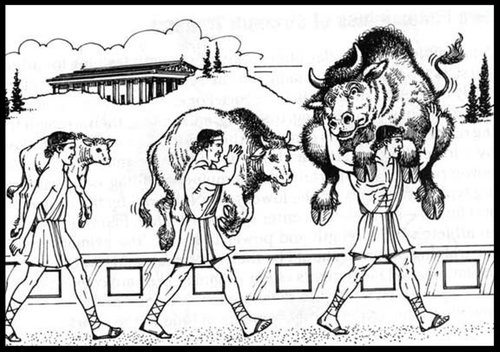Workout Guide
The Fundamentals of Resistance Training
The goal of working out is body transformation. We want to build muscle, burn fat, and be the strongest version of ourselves.
In order to transform your body, it’s important to understand the basic mechanisms of resistance training.
Stress & Adaptation
Stresses on your body cause it to adapt. Like how your palms get callused when you work with your hands a lot.
Similarly, your body adapts to resistance training by building bigger and stronger muscles. Thereby ensuring you can handle similar stress in the future.
But after a while your body gets used to the stress of working out. And the size and strength gains stop. Therefore, you need to continuously subject your muscles to new kinds of stress in order to transform.
Progressive Overload
An intentional and sequential increase in physical stress is called progressive overload. When used properly, this progression leads to ongoing muscle and strength gains.
One example of progressive overload dates back over 2,500 years. Milo of Croton was six-time Olympic wrestling champion. He was a man of incredible strength and athleticism.
And it’s said that he gained his great strength through one simple strategy. As a boy, Milo decided to pick up a young calf near his home and put it on his shoulders. Each day he went back and put the calf on his shoulders. Then, years later, he was no longer lifting a calf but a full-grown bull.

Of course, this old tale has been embellished over the centuries. But the moral of the story is true. When you gradually introduce new challenges, your body adapts to handle the load.
Like Milo and the calf, a gradual increase in load is the classic example of progressive overload. Most likely, this is how you’re used to training.
When you add a little bit of weight to an exercise week by week, you see steady strength gains. However, getting stronger is harder as you reach your limits. So you’re incentivized to change your form in order to lift more.
For instance, you tend to use a wider stance and place the bar lower on your back during a heavy squat. This technique spreads the load to other muscle groups, allowing you to generate more power and lift more weight.
Basically, you train your body to become more efficient at moving heavy weight.
Meanwhile, you take some of the load away from specific muscles like the quadriceps. Therefore your quads do not continue to grow.
In this case, you get stronger without gaining muscle. And it shows that muscle strength and muscle growth are not always directly related.
For that reason, you have to implement the second type of progressive overload to continuously improve.
Intensity
Another type of overload is doing more work with less weight. In resistance training, the amount of energy you expend in a given time is called exercise intensity. Therefore, intensity increases when you do more work in less time.
However, increasing intensity isn’t simply a matter of shortening rest periods between sets. Instead, it also includes putting more stress on an individual muscle. The way to achieve this kind of intensity is through isolation.
Isolation
Isolation is when you make a specific muscle do all (or most of) the work of moving a weight. You increase stress on the target muscle, resulting in a greater adaptation response and more growth.
To illustrate, you’ve probably seen a relatively skinny guy in the gym doing bicep curls with 50 lb dumbbells. Most likely, his whole upper body was moving as he swung the weight up.
On the other hand, you’ve also seen a big bodybuilder curling 25 lb dumbbells in a deliberate and controlled way. The reason the bodybuilder has bigger biceps is isolation.
It’s not just how much you lift, it’s how you lift it.
In other words, rather than simply moving heavy weight, form and technique achieve overload. Of course, this is not to say that heavy weights aren’t sometimes important. But controlling and deliberately moving the weight are keys to building muscle size and shape.
Form & Technique
Good form is when you maintain proper body position during an exercise. And good technique is when you move the weight in a controlled manner through the desired range of motion.
Combined, form and technique isolate the muscle and prevent injuries.
Once you master good form and technique, you can take isolation one step further with your mind.
Mind-Muscle Connection
The mind muscle connection is a biochemical process connecting your brain to your body. With practice you can hone this connection to increase muscle activation through concentration.
To me, it’s a more strategic and intentional way of training. In that you’re actively thinking about what you want to happen. And where your mind goes, your body will follow.
“What you think, you become”
Of course, not everyone needs to improve their mind muscle connection. But if your goal is to develope your muscles as quickly as possible, then it’s worth adding to your toolbox.
